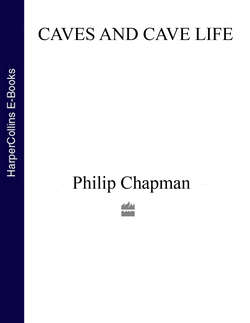Collins New Naturalist Library

Реклама. ООО «ЛитРес», ИНН: 7719571260.
Оглавление
Philip Chapman. Collins New Naturalist Library
Отрывок из книги
The New Naturalist Library
A SURVEY OF BRITISH NATURAL HISTORY
.....
At or below the water table, the course taken by percolation water is determined by the direction of the hydrological gradient between where the water goes into the permanently-flooded system of cracks known as the ‘phreas’ and where it comes out again as a spring. Within the phreas, water is free to follow along, down or up the 3-D maze of cracks to produce the smoothest possible overall flow. Where the rock beds lie horizontally the smoothest profile may be along just one bed, producing a horizontal cave which may run for several kilometers (Yorkshire has many such systems). Where the rocks dip steeply in a direction which does not coincide with the hydrologically-determined direction of flow, the groundwater may be forced into a series of vertical z-bends, down joints and up the bedding, to tack its way to the spring (a classic example is Wookey Hole in the Mendip Hills). Where the limestone beds are trapped in a syncline or U-bend beneath impermeable rocks, water may be forced to travel down to great depths following the configuration of the rock strata. Chinese geomorphologist Yuan Daoxian has recently reported the discovery of a substantial cave at a depth of 2900 m below the water table in the Sichuan Basin in China. When perforated by drilling, the hole gushed water. Caves at this depth are, however, extremely rare and probably have little or no biological significance.
As the profile of the cave takes shape, under the twin controls of hydrology and geology, the ‘best route’ is inevitably favoured with a greater rate of flow, which promotes more rapid corrosion of its boundary walls – which in turn results in a still greater flow capacity. In this way, the initially diffuse drainage within the limestone is gradually simplified with increasing time (and depth) into a pattern of coalescing collectors of increasing diameter. Over the aeons, the vagaries of geology and hydrology may conspire to favour one particular route in preference over all others, opening it out to form a major trunk conduit which drains the entire subterranean aquifer to its spring, or ‘resurgence’.
.....